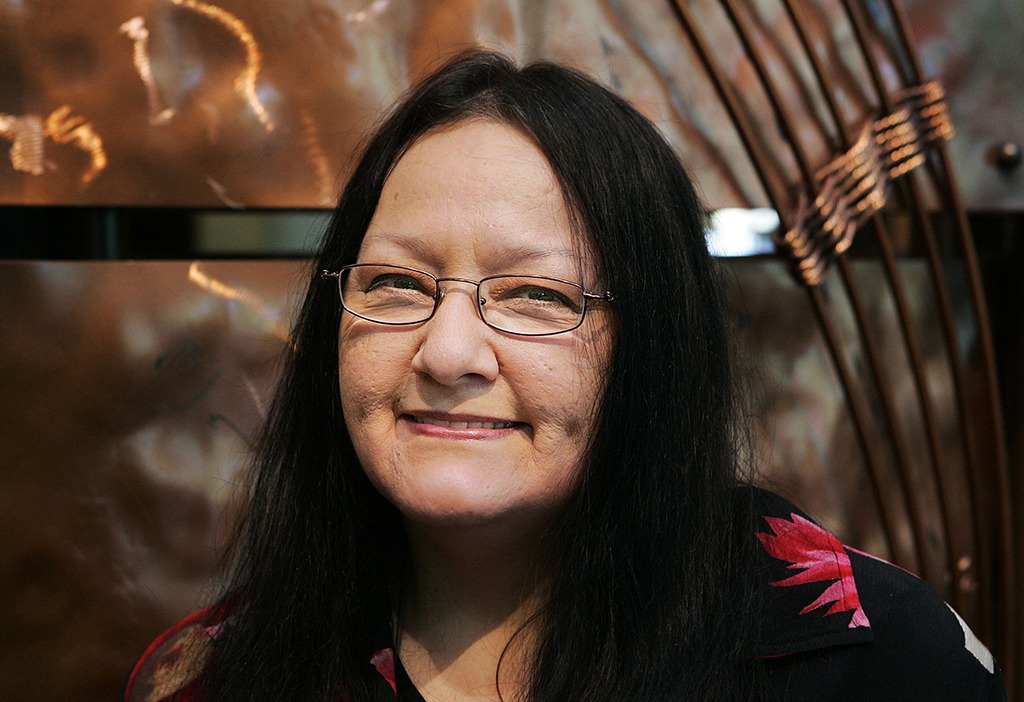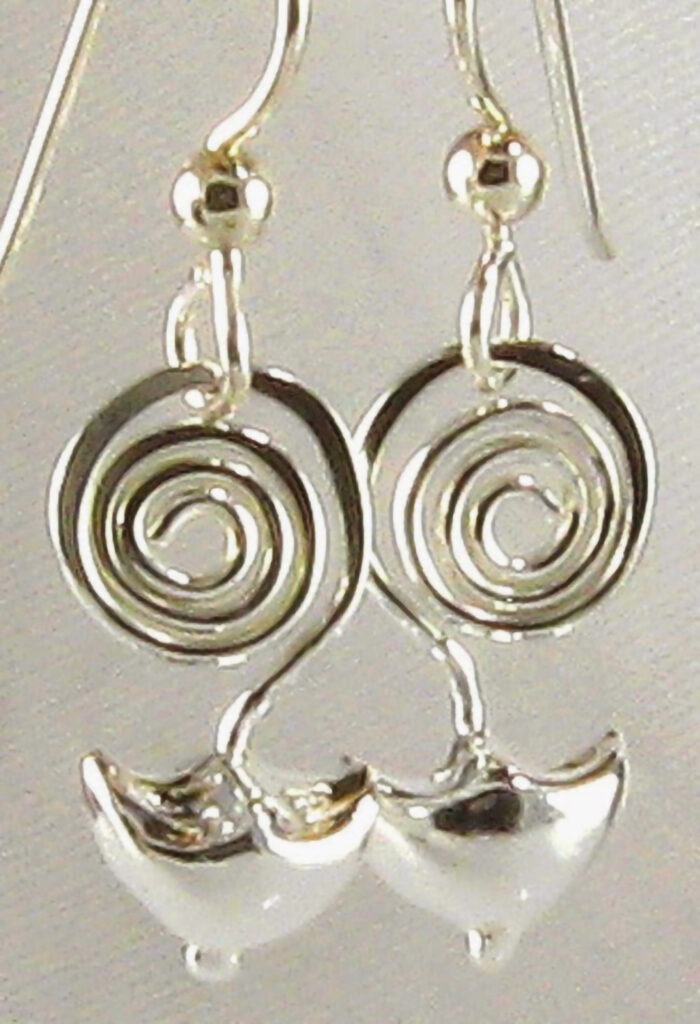
Meet the Native American Grandmother Who Just Beat Washington Redskins
Meet The Native American Grandmother Who Just Beat The Washington Redskins

The woman who was the driving force behind the cases that led the U.S. Patents and Trademarks Office to cancel the federal trademarks for the Washington Redskins on Wednesday is a 69-year-old grandmother and longtime Native American activist named Suzan Harjo. “Suzan has been fighting this since 1992. Native American people have been fighting this since 1972. … The reason it has come up recently is because Suzan has worked really hard to bring this in the public eye,” Amanda Blackhorse, one of the five Native American plaintiffs in the case filed before the Trademark Trial and Appeal Board told Business Insider. “She’s just a tremendous woman. She’s a strong Native American woman, and I’m so happy to have met her, and to have been a part of all this because this is what we need to do,” Blackhorse added. Harjo was born in Oklahoma and is of Cheyenne and Muscogee ancestry. In a conversation with Business Insider shortly after the U.S.
Patents and Trademarks Office’s decision was announced, Harjo said she became involved with political activism while she was still in school. “One time when I was in school, I was selected by our Cheyenne leadership to come to Washington with them. And when my family asked, ‘Why do you want her to go?’ They said, ‘Because she talks good and she ain’t afraid of nobody.’ So, those became resume items,” Harjo recounted. In high school, Harjo was inspired to fight against what she describes as “racist stereotypes in American sports” because of an Oklahoma Native American activist named Clyde Warrior. “He made a personal cause of getting rid of the mascot ‘Little Red’ at the University of Oklahoma,” Harjo said of Warrior. “Most of the Indians in Oklahoma couldn’t stand ‘Little Red’ and we called him the dancing idiot. He was always portrayed by a white guy in Indian costume.” Little Red was eventually banished by University of Oklahoma President J. Herbert Hollomon in 1970.
According to Harjo, activists involved in the effort to eliminate Native American mascots always viewed the Washington Redskins football team as “the worst” offender. “No matter where you went or what was the mascot fight of the moment in any locale, everyone would always say, ‘And the worst one is right there in the nation’s capital, the Washington team name,'” said Harjo. It was the worst one, everyone pointed to it.” Harjo moved to Washington D.C. in 1974. Soon after her arrival, she said someone gave her and her husband tickets to a Redskins game. “We’re football fans and we can separate the team name from the game, so we went to a game. And we didn’t stay for the game at all, because people started – someone said something, ‘Are you this or that?’ So, we started to answer, then people started like pulling our hair,” explained Harjo. “And they would call us that name and it was very weird for us. So, we just left and never went to another game.”
Harjo said her experience at the Redskins game “solidified” her opposition to stereotypical Native American sports mascots. “That just solidified it for me because it wasn’t just name callling, it was what the name had promoted,” Harjo said. “That’s the example of what objectification is. You strip the person of humanity and they’re just an object and you can do anything. You can pull their hair! I wouldn’t even touch someone else!” Harjo, who eventually became the first president of the Morning Star Institute, a D.C.-based national Native rights organization, began looking for ways to change the Redskins name. She said she settled on the strategy of trying to get the team’s trademark cancelled after she was contacted by a Minneapolis lawyer named Stephen Baird in 1992. According to Harjo, Baird was working on a law review article about his theory the Redskins’ trademark could be canceled based on a section of the U.S.
Trademark Act prohibiting trademarks that “may disparage … persons, living or dead, institutions, beliefs, or national symbols.” Harjo said Baird heard she had “looked at all sorts of causes of action, and not settled on any of them, and had been talking with various attorneys about ways that we could approach this.” When Baird called her, Harjo said his “first question” was why she rejected using the Patent and Trademark Office as a forum to fight the Redskins name. “And I said, ‘I have no idea what you’re talking about,'” Harjo remembered with a laugh. “Once he explained his theory, I was so intrigued by his theory. It was very different from the kinds of things we’d been looking at. … It didn’t interfere with free speech, it wasn’t even forcing a decision. What it’s saying is, ‘Here’s what the federal government will or will not sanction.’ Because, it’s the federal government’s role to grant the exclusive privilege of making money off this name.”
After she decided to use Baird’s strategy, Harjo brought a case to the Patent and Trademark Office with herself as the plaintiff in 1992. Though she was initially victorious in 1999, the Redskins appealed in federal district court and eventually won due to something Harjo termed a “technicality” – the federal judge ruled Harjo was too old to be the plaintiff and should have brought the case closer to her 18th birthday. “We wondered if she wasn’t, you know, a cheerleader for the team,” Harjo said of the judge. “It turned out that she and her husband, actually they were regular attendees of the team games and her husband, his law firm had represented the team at one point.” As her case began to lose appeals, Harjo said she began organizing what she described as the “young peoples’ lawsuit” in 2005.
She began watching protests against stereotypical mascots in order to recruit young Native Americans who were committed to the cause and could serve as plaintiffs in a new case that could not be appealed on the same grounds. “It seemed like 18-24 … those were the brackets,” said Harjo. “That’s what many courts had said about what constitutes young people.” Amanda Blackstone was the first person recruited by Harjo. At the time she was a 24-year-old and had organized a protest at a game between the Redskins and the Kansas City Chiefs. Blackstone is a Navajo woman who currently does social work with the Navajo Nation in Kayenta, Arizona. She told Business Insider her work in the community has reinforced her belief stereotypical sports mascots need to be eliminated.
“I have an interest in what we call historical trauma, the oppression that Native Americans went through and continue to go through has a tremendous effect on our mental health and our overall well being as people,” Blackstone said. “So, that is something that is my passion. … We need to work on healing our people and to also educate the public about the oppression that we have experienced and continue to experience, like these mascots.” Harjo said she was “very honest” with the five young people who joined the case about how difficult it would be to fight a legal battle against a pro-football team worth over a billion dollars. “It’s not for everyone and I was frank about the kinds of pressures that they would be up against,” said Harjo. “They go through your garbage and they hire P.I.’s. It’s a nasty business. They’re mean, and they’re big, and they have lots of money.”
In addition to opposition from the team, Harjo said her work against the Redskins name has earned her death threats from the team’s supporters, some of whom she described as “fanatics.” “Even if I’m here working right by the phone, I do not answer it even if I’m expecting a certain call at a certain time,” Harjo said. “We get a lot of hangups and some of those, I just assume now, are the death threats. And some of them are just – I don’t want to hear people yelling at me even if they’re not exactly threatening my life. … I had to get a restraining order against one stalker who had developed a hostile fixation against me.” Though Harjo’s “young peoples’ lawsuit” was filed in 2006, it was put on hold until Harjo’s attorneys exhausted all their remedies in the original case. Harjo said this occurred when the Supreme Court did not take up the case at the end of 2009.
Once the Patent and Trademark Office took up the new suit, Harjo said she was confident it would rule against the Redskins based on the fact the younger plaintiffs eliminated the “technicality” that cause her to lose her case on appeal. “I was expecting it daily,” she said. “I was expecting it and I was expecting a victory.” Harjo said she found out about the victory Wednesday morning after getting an email from the lead attorney on the case. “Then almost immediately, my son and grandson called and the voice I heard on the answering machine was congratulations from my little grandson, which was wonderful,” said Harjo. After this victory, Harjo thinks other teams with offensive Native American mascots need to “get in line.” “We’ve made tremendous progress. There were a little over 3,000 of these in 1970 and now there are just a little over 900,” she explained. “So, we have eliminated over 2/3 of these racist stereotypes in American sports.”
Harjo is particularly adamant that the Cleveland Indians baseball team needs to get rid of its mascot. “I mean, Chief Wahoo is really the graphic equivalent of the name of the Washington team,” said Harjo. However, Harjo said she doesn’t necessarily need to do anything for the anti-mascot movement to notch another victory in Cleveland. Based on the precedent this case established, she said other Native Americans can get trademarks cancelled without a lawsuit. “They would just have to write a letter and say we’re in the same position … and we want the same internal ruling and it would be changed very easily,” Harjo said. “Happily, I don’t have to do anything. I mean there are people, lots of Native and non-Native people in Cleveland who want to get rid of that name and those images and are working in that direction. So, they’re going to do what they will with or without me.”
Harjo said a major change that has occurred in recent years is that the push to eliminate Native American mascots is no longer “just one person’s fight.” “I have had the privilege of being the kind of the face of this fight, but I stand for lots and lots of people who are either vocal about it, or who want to be a part of it, or who are a part of it. This is not a small group of people,” said Harjo. “Now, it’s their fight. … We’ve said now is the time for everyone to just jump into this so that it’s not on the backs of a few people, especially a few young Native people.”





Responses